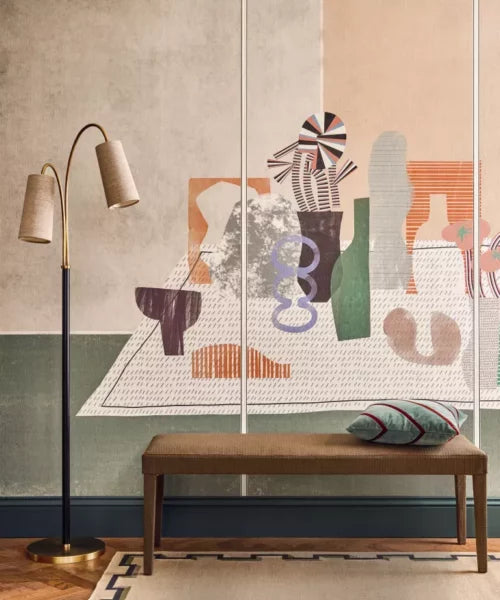
Wallpaper: The Evolution of Interior Design Through Walls
As the year begins, the world of interior design is undergoing a refresh, with wallpaper emerging as one of the key elements driving this transformation. Gone are the days when wallpaper was seen as a secondary detail or just a decorative accessory. In 2025, it becomes a true creative tool capable of defining a space’s personality, adding texture, color, and character to any environment.

The overarching trend points toward a much more expressive approach, where walls stop being a neutral background and take center stage. Mural designs evolve into artistic compositions that function more like large-scale paintings integrated into the surroundings, rather than simple repeating patterns. The focus is on unique images, carefully crafted graphics, and visual details that capture attention without overwhelming the space.

Alongside this aesthetic trend, sustainable materials are gaining ground. Environmental awareness increasingly influences interior design choices, and wallpaper is no exception. Recycled papers, non-toxic inks, and finishes that prioritize home health are becoming standard features in new collections. This doesn’t mean sacrificing visual quality: today’s sustainable wallpapers can offer realistic three-dimensional textures that imitate wood, fabric, or stone with surprisingly tactile finishes.
Another notable feature of this new era is the return of vintage style, reinterpreted with a modern twist. Retro prints inspired by the 1970s and 1980s appear in updated versions — sometimes with softer colors, sometimes with more saturated and vibrant tones, depending on the desired effect. Classic geometric shapes, timeless stripes, and large floral patterns all form part of this nostalgic revival, always adapted to contemporary interiors.

One of the most defining aspects of wallpaper in 2025 is personalization. Consumers increasingly want their spaces to reflect their personal style, and brands are responding with custom designs. From murals featuring personal illustrations or family photographs to color and texture combinations tailored to each client’s preferences, the idea is for every wall to tell a unique and different story. This level of personalization applies not only to large-scale projects but also to smaller home details, such as an accent wall in a bedroom or an entryway featuring an exclusive design.
At the same time, a trend that started gaining attention in recent years is now becoming firmly established: wallpaper on ceilings. Once reserved for bolder design projects, this technique is now becoming more common in private homes — especially in smaller spaces, where a decorated ceiling can create a sense of height or enclosure. When used thoughtfully, ceiling wallpaper adds an extra dimension that breaks visual monotony.

Color plays a crucial role in these new trends as well. While soft and neutral tones remain popular in some spaces, deep and dark colors are gaining ground: navy blue, emerald green, burgundy, matte black, and even metallic finishes combined with golds and glossy details are now used to create sophisticated, character-filled environments. This color palette aims to evoke feelings of comfort, elegance, and modernity all at once.

Ultimately, in 2025, wallpaper is no longer just a decorative element — it is a fully-fledged interior design tool with its own identity. It combines art, sustainability, personalization, and a clear focus on well-being, both for the space and for those who live in it. The global trend is clear: make walls the stars, explore new forms of expression, and use every corner of the home to reflect style, personality, and good taste.
